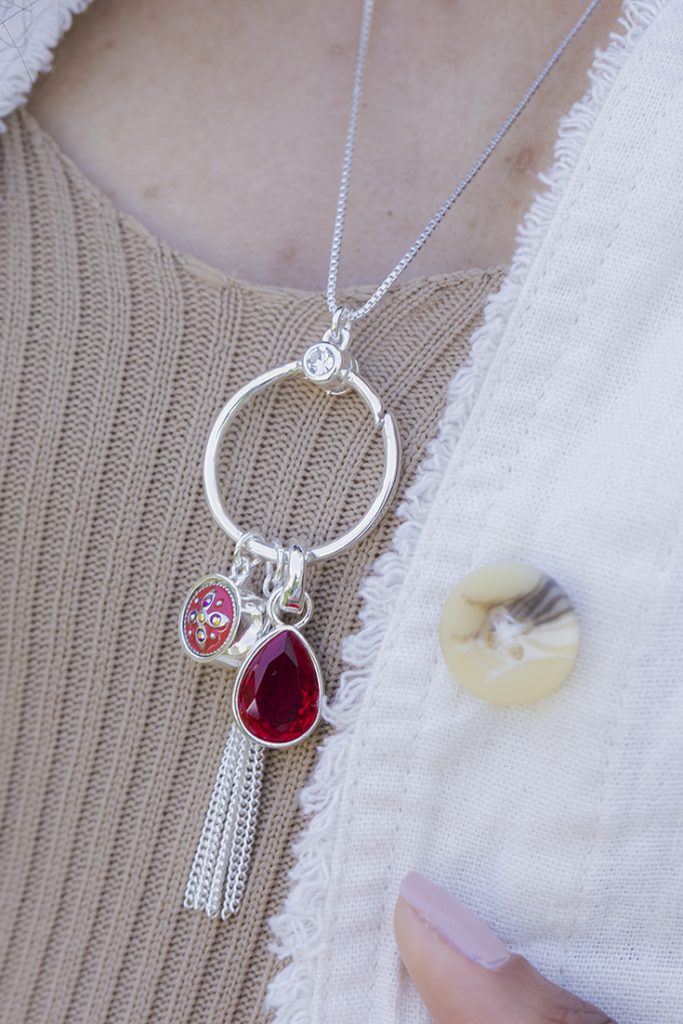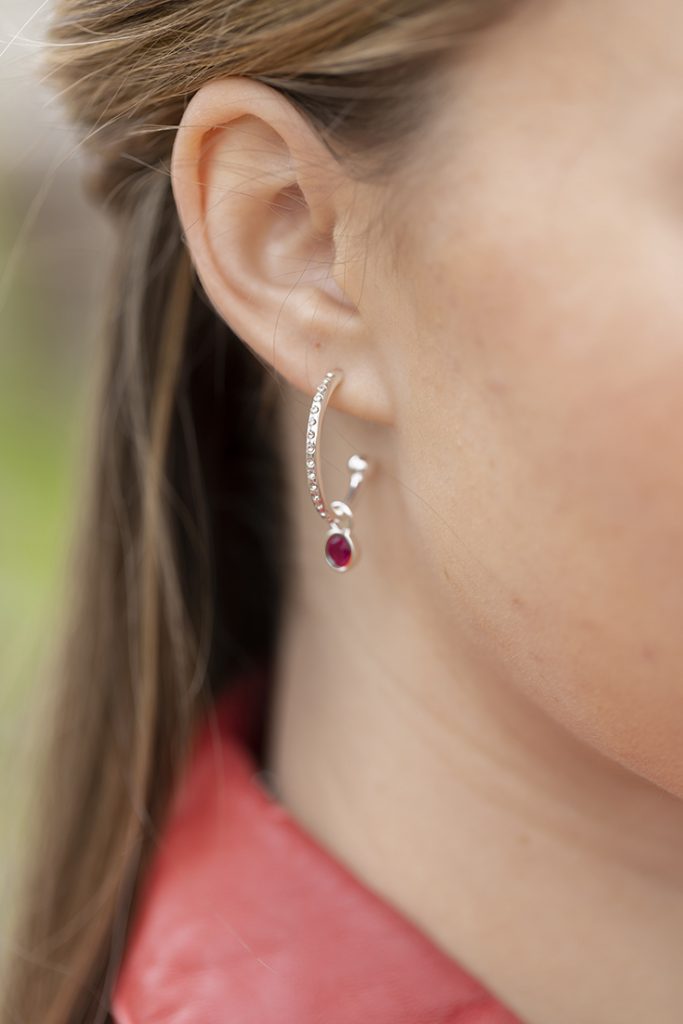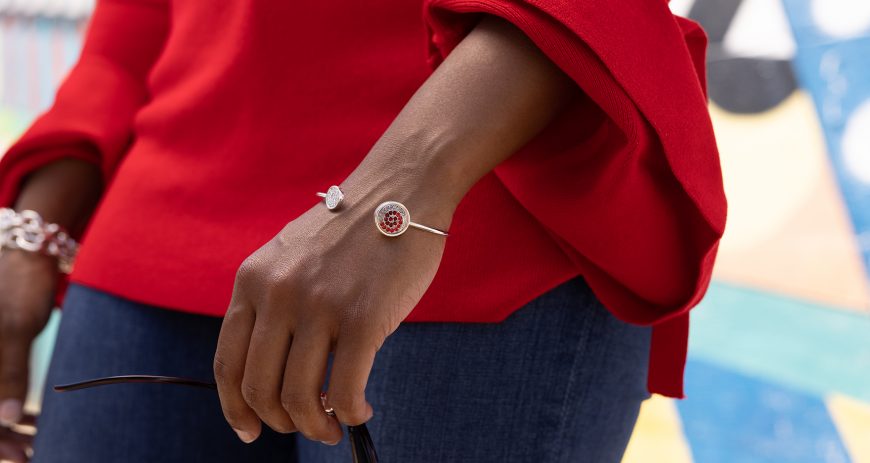
Garnet Teardrop Accent
What Is the January Birthstone?
The January birthstone is the garnet; it’s also the gemstone for the second wedding anniversary (“Garnet”).
What Are the Characteristics of the January Birthstone?
While the red garnet is the most commonly known garnet, garnets are actually a set of closely related minerals that form a group of gemstones in almost every color (“Garnet Description”). You can find garnets in the deep red that they’re most known for, as well as greens, oranges, pinkish oranges, purplish reds, and even some blues (“Garnet Description”)!

Garnet Accent
A demantoid is a famous (and rare) green garnet. A rhodolite is a more well-known purplish-red garnet, and a spessartine or spessartite is an orange garnet. What makes them all garnets is that they share the same crystal structure, while their chemical composition varies creating the differences in color (“Garnet Description”).
What Is the History of the January Birthstone?
The word garnet derives from the word gernet, a 14th century Middle English word meaning “dark red.” Gernet comes from the Latin granatum, which means “seed,” because of the garnet’s similarity to beautiful red pomegranate seeds (“January Birthstones”).
The garnet has been very popular throughout history.
As the garnet is such a durable gemstone, people throughout history have used this beautiful gemstone.
Historians have found pieces of garnet jewelry dating as far back as the Bronze Age. Egyptians in 3100 BC used the garnet as inlays in their jewelry and carvings. They referred to it as the symbol of life (“Garnet History”).
Persians considered the January birthstone a talisman from nature’s forces, like thunder and lightning. They believed it signaled approaching danger by turning pale (“Garnet”).

Garnet Couture Dotlet
The Romans in the third and fourth centuries also used the garnet gemstone as a talisman. They used it for protection when going into battle and to ward off pestilence and plague. While ancient healers and wise men would place garnets into wounds for their healing power (“Garnet History”).
Ancient Romans often used garnet gemstones in signet rings, and the nobility greatly favored them during the Middle Ages (“Garnet History”).
During the Victorian Era, gemologists created jewelry with garnets that mimicked its pomegranate namesake, with clusters of tiny red gems forming larger statement pieces (“Garnet History”).
Where Can You Find the January Birthstone?
Since 2003, New York State has ranked first in garnet production in the United States, specifically Barton Mines in Warren County (“Garnet”). They’re also the oldest and largest garnet mine in the world.
However, you can find garnet mines all over the world depending on the type of garnet. For example, the grossular garnet is from Kenya and Tanzania; you’ll find the uvarovite garnet in Russia and Finland; and the blue pyrope–spessartine garnets were discovered in Bekily, Madagascar, and have also been found in parts of the United States, Russia, Kenya, Tanzania, and Turkey (“Garnet”).
Discover your perfect January birthstone today at StyleDots.com!
Learn more about birthstones in our Birthstone Guide.

